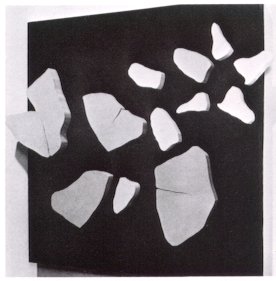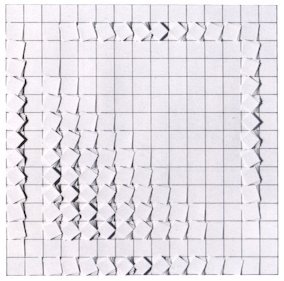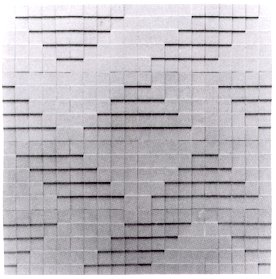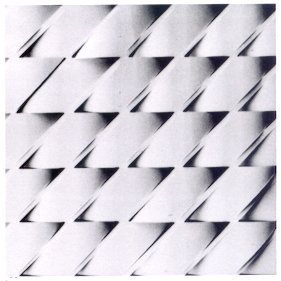|
5--Relief
In regards to solids, there are devices to make a solid. Or it is made similar to a plane with an uneven cubic swell - that is, formative art that has both elements of planes and solids. This is known as relief. We, human beings, are individual solids and live in three-dimensional space. And as such, we have a strong interest in solid objects. In the expression of a plane, the solid expression is made using various devices. The action is to pursue the illusion that makes non-solid object look solid. Relief is not the pursuit of solids, but concrete representation of solids on a plane is the real problem. That is, solids should not only exist as a visual effect, but also be recognized by the sense of touch. This joining of "the sense of touch" creates a huge formative effect. If such effect appears adequately, the relief doesn't
have to be greatly uneven to the extent of several centimeters, a relief
that has only several millimeters of unevenness is still accepted. The
aspect in which the plane has only a subtle swell making a big formative
effect is elegant, and vivid in another point of view. Relief is expressed
concretely in solids, so it has light and shadow. Therefore, it is formative
art that has something to do with the light. If we make a relief using
white Kent paper, we can know the delicacy and the beauty of light and
shadow.
|



